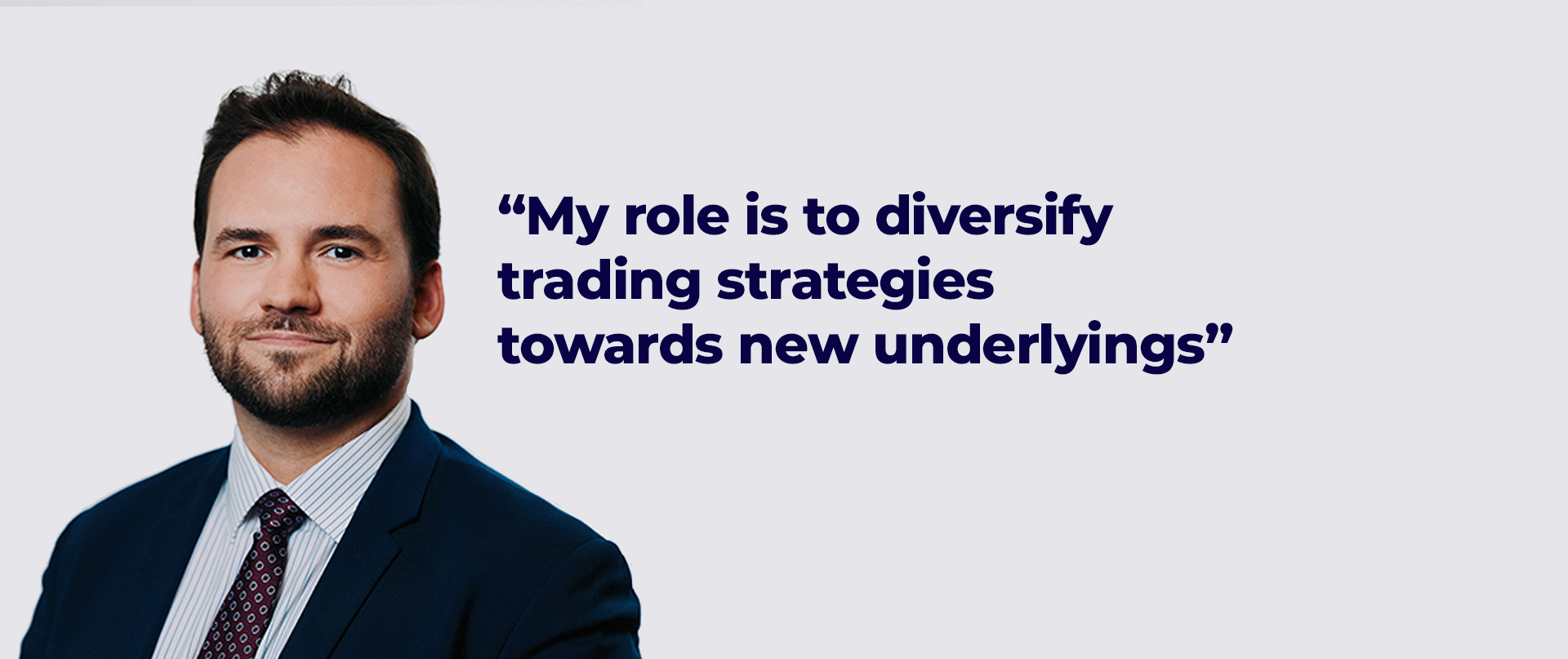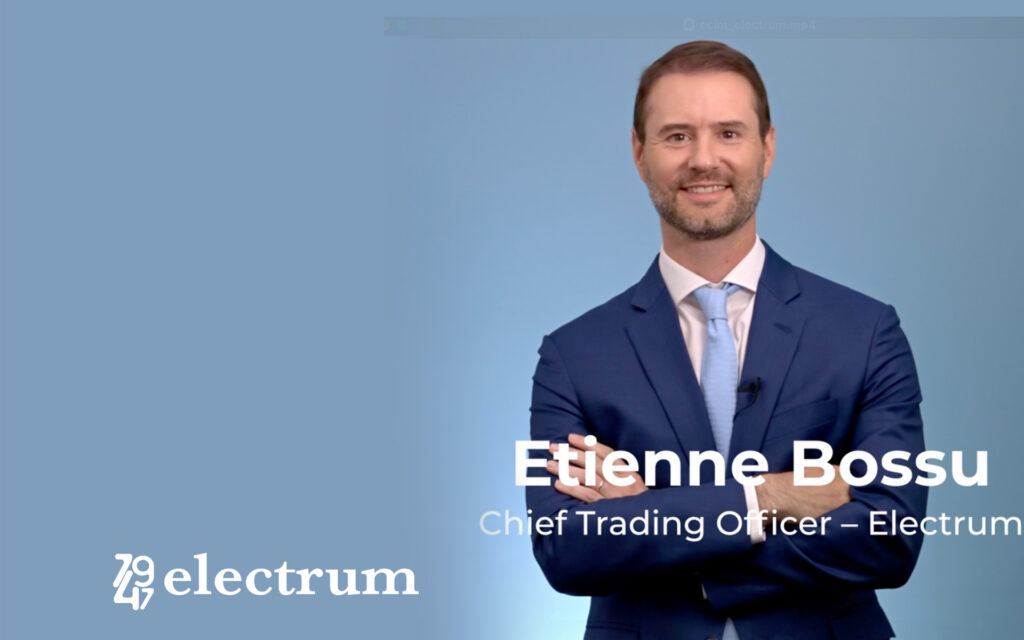Interview with Etienne Bossu, Chief Trading Officer at Electrum

Our Senior Commodity Trader, Benoit Hélin, answers our questions.
December 10, 2024
Benoît Hélin joined electrum in the summer of 2024 as Senior Commodity Trader. After two experiences as an analyst-manager at SMA Gestion, then in the treasury department of the ArcelorMittal group as a Senior Trader, Benoît now deploys a wide range of discretionary strategies based on macroeconomic, fundamental, technical and quantitative analyses across a broad spectrum of commodities.
As a Senior Commodity Trader at electrum, you are responsible for expanding trading strategies into new commodities, beyond just precious metals. What will these underlyings bring to the strategies previously implemented at electrum?
The first obvious benefit for electrum in extending its trading capabilities to the energy, metals and agricultural commodities markets is diversification. Oil, cotton and zinc are all commodities, but each evolves in its own market context, volatility pattern, language, value chain and history. By definition, exposure to a greater number of markets also puts us in a position to seize more opportunities and dilute our portfolio risks.
The second advantage I see is that we can capitalise on the asymmetry that is constantly forming between the paper (derivatives) and physical (spot) markets. All commodities, without exception, benefit from the formidable force of the physical balance between supply and demand at a given moment. Often, the paper markets anticipate (and value) certain future developments that are not yet fully effective and/or that diverge too much from the physical equilibrium. In this sense, forward price curves are very useful tools not only for gauging the fundamental situation of a commodity but also for arbitraging it on the basis of the market views derived from our analyses.
To carry out your work, you have to combine macroeconomic, fundamental, technical and quantitative analyses. How do you combine these different approaches?
All these approaches complement each other and go hand in hand with the market. The market is exposed to a constant flow of information of all kinds, and it seems to me that a wise trader is able to discern the noise of a trend or reversal precisely by mastering this panoply of tools. In the short term, quantitative and technical signals prove to be powerful allies and levers of performance, while in the longer term, fundamentals and macro or geopolitical news cannot be ignored because they have such an impact on market sentiment, and therefore on the positioning of players and ultimately on prices. The combination of these approaches is absolutely critical to the long-term performance of a portfolio or a fund. The daily challenge is to juggle these approaches on a daily (and sometimes hourly) basis, because you need to reassess the relevance of your open positions at all times.
You have co-managed funds invested in commodity derivatives. What has changed in your day-to-day life as a result of switching from third-party management to proprietary trading?
The two worlds are very similar in reality, with the main objective in common being to generate performance within a risk envelope. It’s true that a fund is more about investing than trading, but a prop firm doesn’t mean it can’t take long-term risk, just as a patient and disciplined fundamental investor would. I would point out, however, that fund management does require a certain commercial flair, where managers are regularly called upon to explain their market views, the strategies they are working on and the metrics of their funds to a varied audience of investors. In a prop firm, the day-to-day work is much more focused on market analysis, position-taking and risk management. Unlike a fund, proprietary trading is not really measured against a benchmark index, which gives you a certain freedom of action to achieve absolute performance targets that are as high as possible, but above all as regular and detached from a market context as possible.
You run a Commodity Trading lecture as part of the Alternative Assets course at the Rotterdam School of Management. How does your involvement in the academic world affect your practice?
Preparing a presentation for students systematically forces me to revisit and update my knowledge. The most inquisitive students often ask questions that force me to completely reverse my analytical prism. You inevitably grow from it. Of course, students are always keen to hear juicy anecdotes and comments on the use of a concept on the desk. On the whole, the teaching method teaches us humility and gives us a taste for passing on what we’ve learned – it’s a real exchange. And in fact, on a daily basis I’m in constant interaction with all the members of my team, from the most junior to the most senior. There’s a lot of emulation around trading ideas and market views, which provides a certain intellectual satisfaction and at the same time strengthens cohesion. The markets heckle us every day and we face them together, armed with everyone’s ideas, experience and trading approaches.
Our Publications
Etienne Bossu, Chief Trading Officer at Electrum, talks to Véronique Riches-Flores, independent macroeconomist and former Chief Economist at SG CIB, about the global economic outlook and the new market paradigm. […]
EU Carbon Market 101The European Union Emissions Trading Scheme (EU ETS) is based on a cap-and-trade system: Operators of installations including power generation, various industries and intra-European aviation covered by […]



